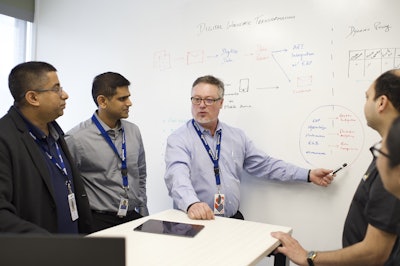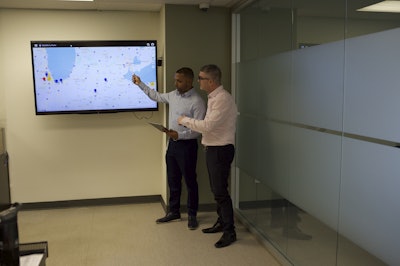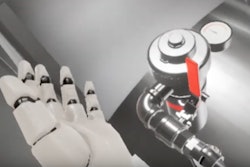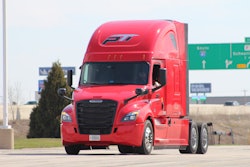 Dave Brajkovich, chief technology officer, says the ultimate goal for NorthStar Digital Solutions is to develop the capabilities for “complete order-to-cash automation” of freight transactions.
Dave Brajkovich, chief technology officer, says the ultimate goal for NorthStar Digital Solutions is to develop the capabilities for “complete order-to-cash automation” of freight transactions.As work continued to progress with RPA technology in order entry and the customs and operations departments, Cox and Brajkovich created a new business entity in 2018 called NorthStar Digital Solutions.
Rather than place PTG’s growing technology team into an IT department, which carries a perception as a cost center, the executives wanted technology workers to have a sense of ownership and be perceived as “a bunch of smart people trying to improve processes,” Brajkovich says.
Cox and Brajkovich also saw an opportunity for NorthStar Digital Solutions to develop technology that could benefit other motor carriers, freight forwarders and even businesses in other industries. While PTG is its largest customer, NorthStar Digital Solutions has added capacity to develop and support solutions for other clients.
As part of PTG’s digital transformation, Cox renovated the office with an open area to give it a modern feel. NorthStar Digital Solutions is located in the new addition, which has a Digital Laboratory for executives and technology and front-line office workers to gather at any time of day.
“This is our creation room where we do brainstorming,” Brajkovich says, pointing to walls in the Digital Laboratory that are painted for the whiteboarding of ideas, projects and tasks. “The inspiration that this has created is massive.”
The ultimate goal for NorthStar Digital Solutions, Brajkovich says, is to develop the capabilities for “complete order-to-cash automation” of freight transactions. People always will be needed to manage exceptions and “pull the switches and levers,” he says, but technology can remove the mundane, repetitive work.
The Digital Laboratory currently is testing new technologies the company is planning to roll out. One of the top priorities is to go live with a barcode- and document-scanning application for drivers that will help to further digitize the workforce and workflow.
Currently, drivers collect bills of lading and other shipping documents and return them to the office after their pickup routes. The documents are scanned, reviewed by customs and sent to freight forwarders and border agencies for clearance.
 Jason Ragoo, dispatch manager, says the operations team has been able to reduce labor costs and free people up to “focus on bigger things” to increase asset and driver productivity.
Jason Ragoo, dispatch manager, says the operations team has been able to reduce labor costs and free people up to “focus on bigger things” to increase asset and driver productivity.Ultimately, PTG wants to be able to clear freight through customs as soon as drivers get the documents. With a new application, drivers will be able to take a picture of a bill of lading or scan a barcode, and they also will be able to update shipment quantities for real-time visibility and give customers and dispatchers real-time shipment arrival notifications.
By getting that data earlier in the process, PTG will be able to process orders for customs clearance – before drivers return and freight hits the dock for loading the line-haul trailers – by importing data and documents into the RPA platform remotely.
“Building manifests as we’re loading is where we are going,” Brajkovich says.
The new technology will complement a mobile app PTG recently began using from Trimble called D2Link that drivers use to receive dispatch information and update shipment status.
With the D2Link technology, the operations team has been able to reduce labor costs and free people up from manual work to “focus on bigger things,” such as how to increase productivity, says Jason Ragoo, dispatch manager.
About the award
Commercial Carrier Journal’s editors recognize innovators throughout the year and select one for special recognition as the CCJ Innovator of the Year. Innovators considered for the current award were those recognized in the magazine in 2019.
Innovation in any aspect of the operation is eligible for recognition. To qualify, the carrier must operate at least 10 power units in Classes 3-8 and maintain a satisfactory safety rating, if rated. Selection of innovators for recognition is at the sole discretion of CCJ’s editorial staff.
This year’s award was announced and presented at the CCJ Innovators Summit, a networking event for current and prior-year CCJ Innovators held Feb. 5-7 in Key Largo, Fla. Representatives of the innovative trucking operations updated one another on their initiatives.
The CCJ Innovators program is sponsored by Freightliner Trucks, Omnitracs and Shell Lubricants. For more information on the program and links to previously recognized CCJ Innovators or to fill out the online nomination form, go to CCJInnovators.com, or contact Jason Cannon, CCJ editor, at 205-248-1175.

















